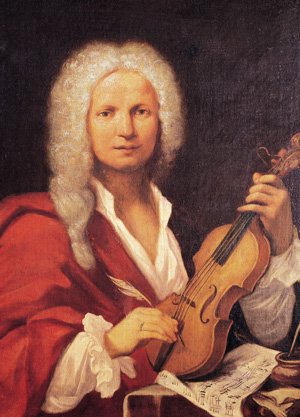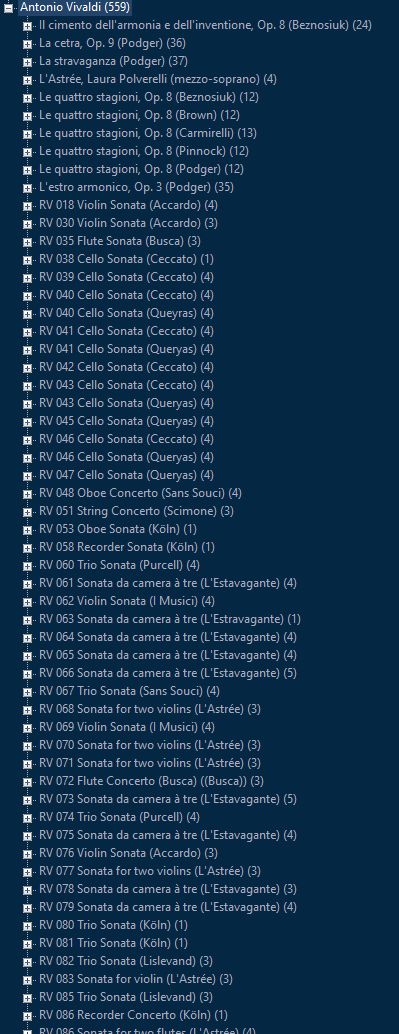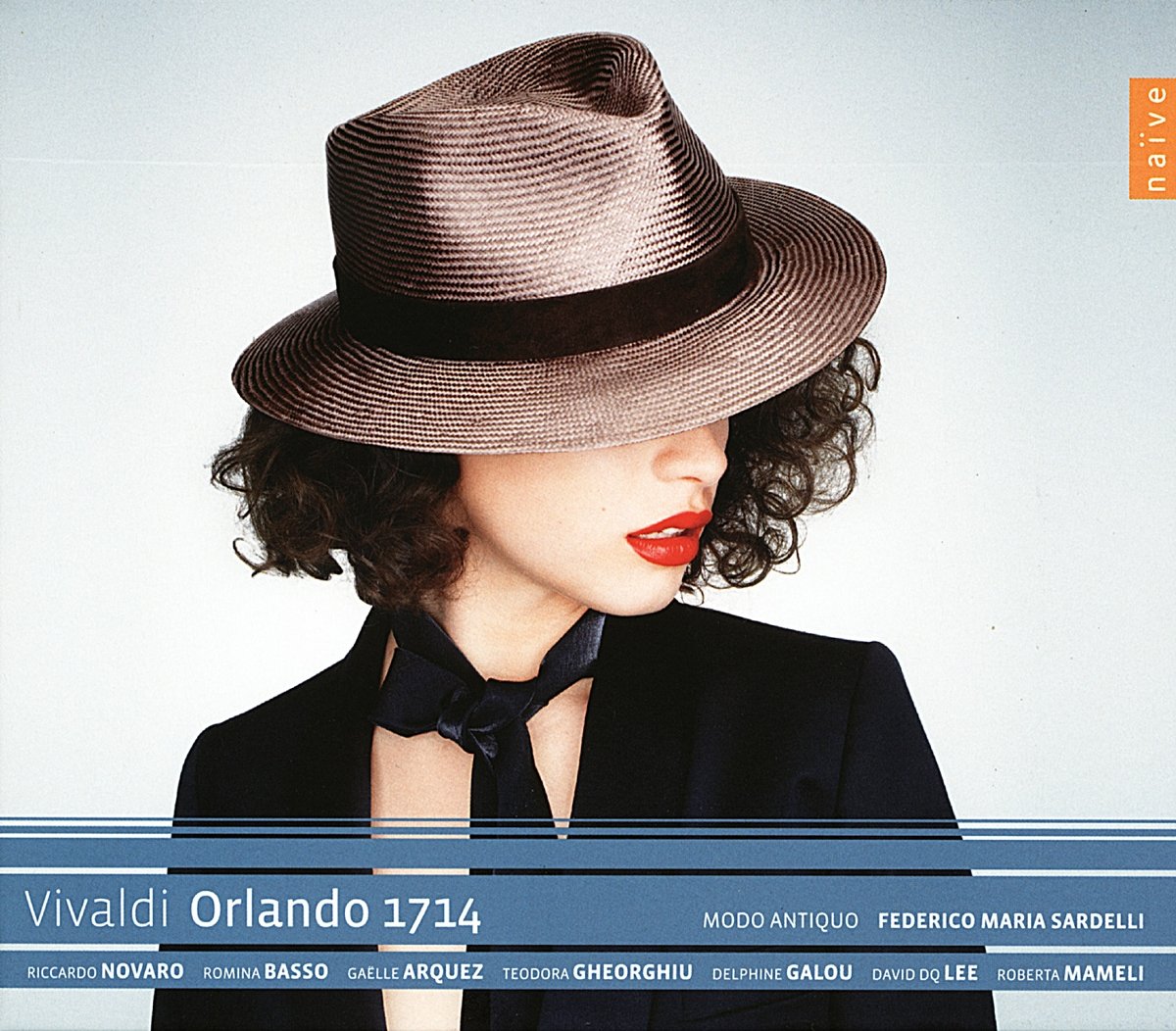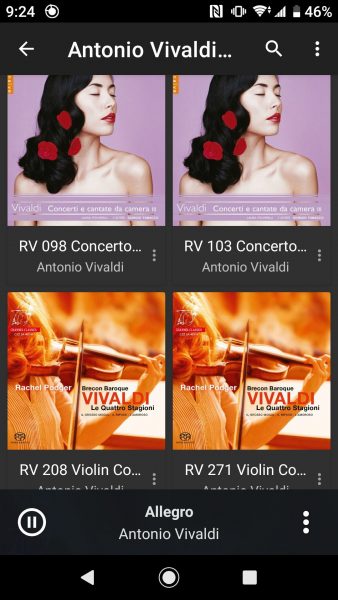 Antonio Vivaldi's one of those composers most people have heard something of, even if they don't know who or what... though my betting is that it's likely to be one of the Four Seasons violin concerti!
Antonio Vivaldi's one of those composers most people have heard something of, even if they don't know who or what... though my betting is that it's likely to be one of the Four Seasons violin concerti!
His ready popularity with those four concerti makes it temptingly easy to dismiss him as a lightweight -or, worse, a repetitive lightweight. Stravinsky famously did, for example, when he said that, "Vivaldi is greatly overrated—a dull fellow who could compose the same form so many times over."1Quoted in Conversations with Igor Stravinsky (1959) by Robert Craft Note, by the way, that he did not say "he didn’t actually compose 500 concertos, he just wrote the same concerto 500 times": no-one's quite sure where that joke came from -or why the number 500 is sometimes given as 400- but in whatever form, it's not Stravinsky's.
There are good reasons to dismiss Stravinsky on this subject, though: after all, he was talking in the 1950s, after Vivaldi's music had started to be re-discovered but before a good deal of the catalogue that now exists was properly resurrected... so he was basically speaking from a position of ignorance. He was also writing well before the 'Historically Informed Performance' movement put back a more appropriate tonal colour and musical 'depth' to Vivaldi's work ...which is another way of saying, he was speaking without a lot of evidence to go on.
Personally, I grew up with the Four Seasons along with Grieg's Morning, Borodin's Polovtsian Dances and Rimsky-Korsakov's Flight of the Bumble-Bee: he was (and they all were) considered acceptably dilute fare for a young child with weird musical interests, I guess! I would probably have left Vivaldi there had it not been for my history teacher at secondary school, the legendary Harold Vafeas. He took over the running of a Senior Choir and immediately started us singing "serious" music... and the first piece we learnt and performed in public was Vivaldi's Gloria. Well, that's all we knew it as then -little did we know in around 1979 that Antonio had written several glorias, and the one we were singing was the one now catalogued as RV 589. But, regardless: once you get familiar with a composer's work by singing or performing it, it makes an impact on you that merely listening to a CD version of it cannot match.
 Accordingly, I have quite a large Vivaldi collection, acquired piecemeal over the years. Trouble is, it's a ghastly mess as far as cataloguing and organising things properly is concerned! Take a look at some of the the collection details as shown in Foobar2000 in that image on the right.
Accordingly, I have quite a large Vivaldi collection, acquired piecemeal over the years. Trouble is, it's a ghastly mess as far as cataloguing and organising things properly is concerned! Take a look at some of the the collection details as shown in Foobar2000 in that image on the right.
At first glance, it might not look too bad: there's a nice section for string concerti, followed by a set of double horn concerti, some flute concerti, a bunch of recordings of the Gloria I just mentioned... and so on. Looks organised, right?!
Well... look again. Why is it 'concerto for strings' at one point and 'flute concerto' at another? That sort of inconsistent word-ordering means it's poorly organised, right out of the gate. Then there are some other details: why is it 'flute concerto RV 428' in one place and 'Flute Concerto No. 1' in another? Does Flute Concerto No. 1 not have an RV number? (It does, but I'll come on to that in a moment). There are also outright errors: Vivaldi certainly wrote a lot of music in his time, but even he would have been hard-pushed to write so much that In furore giustissime irae would have acquired a catalogue number of RV 6256 -and spelling 'giustissime' is not right, either! Finally, it's a bit disconcerting how an opera suddenly pops up in the middle of sacred music: Griselda appears sandwiched between the Gloria and the previously-mentioned In furore... because that's the way the alphabet works!
In short, once you really look into it, it's actually a bit of a mess as far as cataloguing a music collection goes. It's what happens when you acquire bits of music over 30 or so years, of course... but that's no excuse for it continuing to be so badly organised.
Lest this appear to be merely a case of Obsessive Compulsive Disorder on my part, too, let me be clear that, when you subconsciously know that finding anything specific by a composer is difficult because his library of works is poorly organised, you tend not to listen to that composer's music very much. I know for a fact that I have been put off 'tasting' Vivaldi because I know that wading through that poorly-put-together music library involves a lot of scrolling, not readily spotting the gems amid the rest, and is more effort than it's worth. Thus, one tends not to bother in the first place. Vivaldi's music deserves more than that!
So a few weeks ago, I decided to re-vamp my Vivaldi collection: to step back and survey the entire ouvre, starting to name things consistently and make it easier to find any given piece. I also thought I'd take the opportunity to 'upgrade' my collection, by adding to it pieces I didn't already have or by replacing fairly old recordings (pre-1980s) with more recently-recorded versions, aiming in particular to have post-2000 recordings whenever possible. I thought it might take me a day or two... but it's a bit like when you pull at a loose thread on a jumper and realise that it's gradually unravelling and there's no sensible point at which to stop pulling, so you have to just keep going until the thing distintegrates in its entirety!
 Nearly four weeks later, then, the result is visible on the left.
Nearly four weeks later, then, the result is visible on the left.
The works are now (nearly!) all named with their official "RV" numbers up-front. Those are the 'Ryom Catalogue' numbers assigned (originally) by the Danish musicologist Peter Ryom in the early 1970s. In broad terms, his assignment of numbers was 'thematic': he started by listing the works without orchestra, splitting them into works for 1 instrument, 2 instruments and more than 2. Next were works with orchestra -again, subdivided into works with 1, 2 or more instruments and so on. The details can be a bit complicated, but in broad terms, it means if I want to listen to a bassoon concerto (and he wrote lots of very good ones of those!), I need to be looking around the RV400s. If I fancy an opera, somewhere in the RV700s, there will be several to choose from. The sacred choral works are going to be in the late 500s and early 600s and so on.
So naming my recordings by their Ryom numbers up-front immediately makes the complete list of works much more navigable. Since the underlying catalogue is fundamentally thematic, my music collection inevitably also gets ordered in a broadly thematic way without any extra effort required on my part. It's then much easier to search through the whole list to find something that you fancy listening to right now -despite the names looking, perhaps, a little more intimidating than they used to (catalogue numbers always tend to look a bit less human than friendly names, I think!).
I made an exception to the 'start with a Ryom number' for those works which were published in Vivaldi's own lifetime. As published works, they got proper "opus numbers" ...and (often) nick-names. Thus the Opus 9 set of violin concerti were published with the name 'la cetra' (literally meaning 'the guitar' or 'the cittern', but Vivaldi was indicating a style or tone of his concerti, rather than a guide to which instrument should play them). Similarly, the Op. 4 set of concerti were published with the 'La stravaganza' name you see toward the top of the list. I though it better to keep these sets of concerti together as published collections rather than to split them out under their individual Ryom numbers: Vivaldi published these himself and clearly thought of each of them as a coherent entity in its own right, rather than as just a bunch of separate concerti thrown together. Who was I to disagree!
I also made an exception for the Four Seasons (under their Italian name of quattro stagione). Techncally, they are part of the Opus 8 'Il cimento dell'armonia e dell'inventione' collection (the first four of the 12 opus 8 concerti, in fact)... but they are so often heard as a distinct piece these days that I thought it perverse to keep them hidden under the Opus 8 nomenclature. They thus get separated out in their own right.
But apart from that... it's Ryom numbers all the way. After the Ryom number, I also got consistent about naming: it's Oboe this and Cello that and Violin the other, never 'Concerto for...' first. The reason for that is quite simple: I sometimes listen to music via my phone and my phone's screen is not very wide. Left to its own devices, therefore, you soon end up with displays of information looking like this one:
With only so much space to display a recording's name, everything tends to be called simply 'Concerto', as is the case in the top row of the above display -which makes it a problem knowing whether you're about to play a flute concerto or a bassoon one! I didn't realise this to start with, hence those top two concerti being named 'concerto for something': once I realised the problem, I soon went back and named things in the 'Instrument Concerto' format that you see in the bottom row of the phone display. At a glance, I can now tell on even the smallest screen what the principle instrument of interest is going to be. (Writing this, I notice one error in my Foobar listing where I missed the necessary correction: RV 083 should be 'Violin Sonata' not 'Sonata for Violin'. I shall correct that imminently! The nice thing about being consistent, at least, is that when you slip up, your errors leap out at you!)
What this tells you, I think, is that cataloguing has to be consistent, yes; but above all, it has to be useful. Since I use devices with small screens, my naming conventions have to take that into account. If you personally don't have that need, then your choice of naming might be quite different -but equally valid for your specific circumstances.
In terms of 'upgrading' my collection, I soon discovered that a wonderful -and vast- collection of Vivaldi manuscripts is housed in the Turin's Biblioteque Nazionale and a project has been underway since the late 1990s to record all the music contained therein by the Naïve record label. All their Vivaldi recordings come with very distinctive 'fashion photography' artwork, which makes them instantly recognisable. More importantly, they come with impeccable musicological and performance credentials: several recordings are directed by Federico Maria Sardelli, for example. He's important because Peter Ryom annointed him as keeper of the Vivaldi catalogue in 2007 ...what Mr. Sardelli now says is authentic Vivaldi gets a new RV number and what he declares to be inauthentic has the pall of inauthenticity cast upon it for all time! Anyway, the point here is that all the Naïve recordings are rather wonderful ...and so much better than the equivalent recordings I had originally acquired as part of the Brilliant Classical Vivaldi Masterworks series, some of whose recordings date back to the 1960s!
 Accordingly, my Vivaldi collection has grown. It has in fact just about doubled and the overall quality has gone up by much more than that. I cannot tell you with what relief I was able to press the delete button on nearly everything in my original collection that had been conducted by Pieter Jan Leusink (not because he's particularly bad -far from it; but the choir he's often recorded with -the Holland Boys Choir- frequently sound awful. They have a tendency to 'hoot' in a way I just don't quite understand is actually possible!) If you don't know much Vivaldi at all, I'd certainly still recommend starting with the Brilliant Classics collection: you're not going to get a pile of classical music for 89p a CD anywhere else, I suspect! Meanwhile, the Naïve CDs are, generally, very expensive: $20 for a 2-CD set seems about the going rate. I'd definitely say they were worth it, though.
Accordingly, my Vivaldi collection has grown. It has in fact just about doubled and the overall quality has gone up by much more than that. I cannot tell you with what relief I was able to press the delete button on nearly everything in my original collection that had been conducted by Pieter Jan Leusink (not because he's particularly bad -far from it; but the choir he's often recorded with -the Holland Boys Choir- frequently sound awful. They have a tendency to 'hoot' in a way I just don't quite understand is actually possible!) If you don't know much Vivaldi at all, I'd certainly still recommend starting with the Brilliant Classics collection: you're not going to get a pile of classical music for 89p a CD anywhere else, I suspect! Meanwhile, the Naïve CDs are, generally, very expensive: $20 for a 2-CD set seems about the going rate. I'd definitely say they were worth it, though.
Anyway: it has been quite a ride! A lot of CD purchasing, ripping and re-ripping and lots of cataloguing/typing has resulted in a Vivaldi collection I'm pleased with and can navigate with ease. Along the way, I have found the time to get thoroughly immersed in the tricky art of musicological cataloguing of Vivaldi's works -resulting in me writing a searchable, filterable and re-orderable digital version of the Ryom catalogue on this very site! Above all, as a result of listening to little else for the past month, I've come to realise that, far from writing the same thing 500 times, the vast majority of Vivaldi's output is charming, delightful and thoroughly worth listening to. I commend it to you (and resume my search for the 30% of his works which are (a) not still lost and (b) aren't yet in my music collection!)
